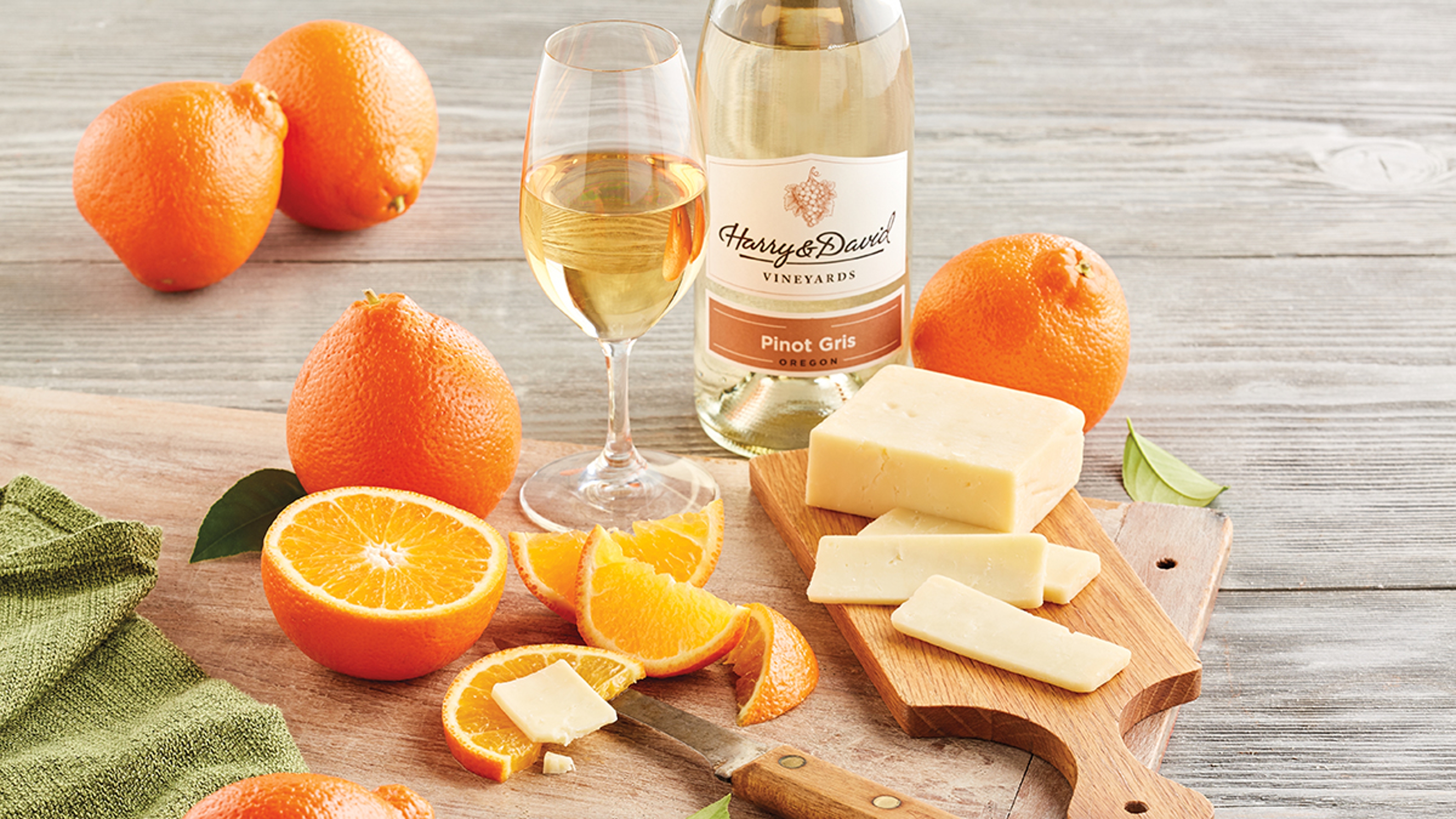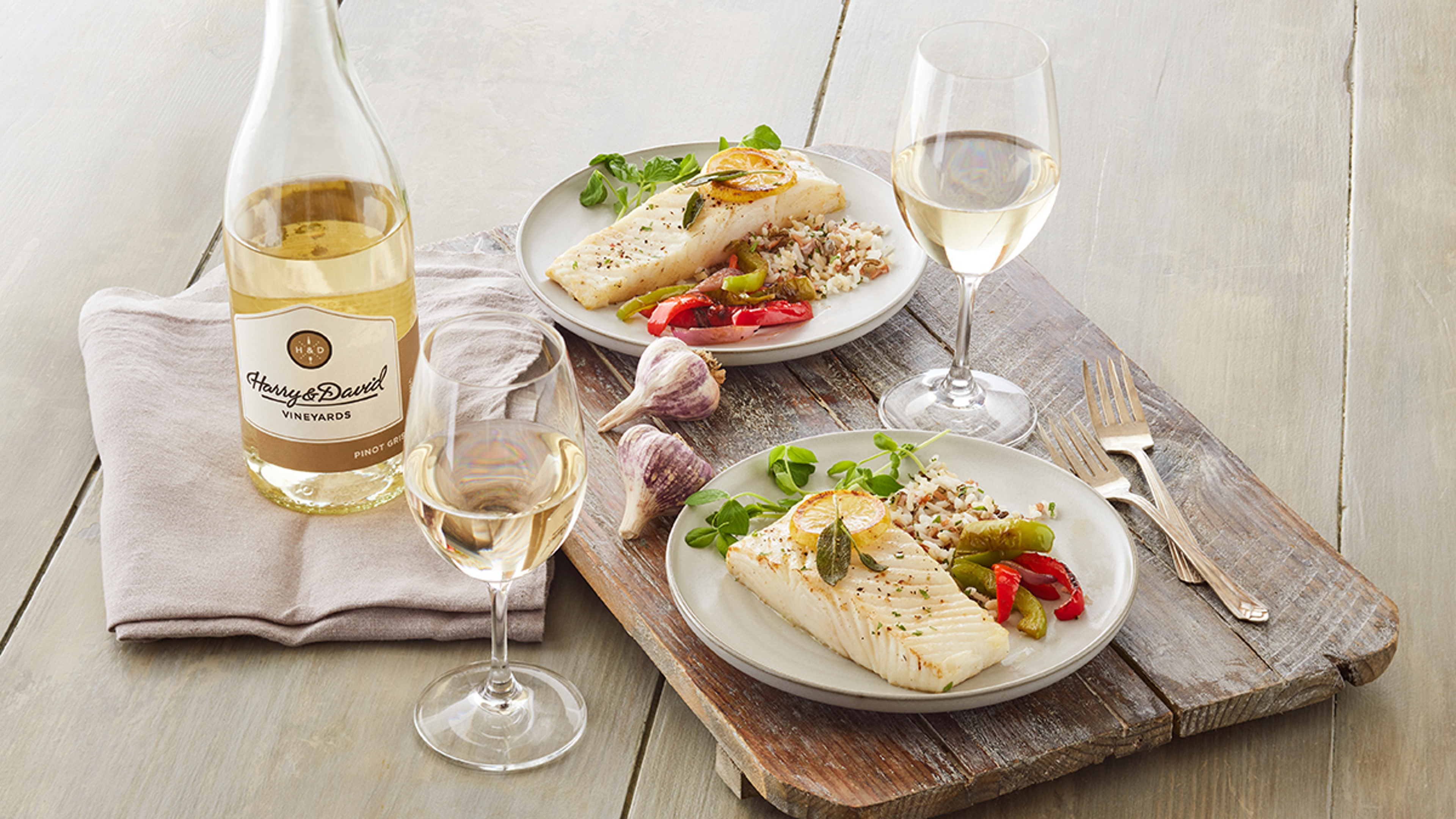A Wine Lover's Guide to Enjoying Pinot Gris
Give yourself, your guests, or gift recipients a pleasurable wine pairing experience no matter how difficult the ingredients.
Aug 08, 2023
Pinot gris is a gray-skinned grape varietal that many experts believe is a mutant clone of the pinot noir grape (hence the name “gris," or gray, instead of “noir") that originated in the Burgundy region of France during the Middle Ages. Wines made from pinot gris are typically medium bodied with a pale yellow to light golden color and feature a wide range of potential flavors depending on location and winemaking methods.
Though the grape is grown around the world, the two most widely recognized styles of pinot gris are the spicy, complex, fuller-bodied versions from the Alsace region of France and the lighter-bodied, more acidic versions from Italy, where it is called pinot grigio, picked earlier to achieve a more neutral flavor profile.
Wait, so pinot gris and pinot grigio are the same type of wine? Well, sort of.
Pinot gris tasting notes
On the palate, pinot gris is known for its crisp acidity and refreshing taste profile, which brings a lively and vibrant quality to the wine. Flavors can range from citrus notes like lemon/lime zest and green apple to more luscious tropical fruits like pineapple, melon, and mango.

Most New World regions growing pinot gris, such as Tasmania, South Australia, New Zealand, Chile, Washington State, and Oregon, typically use the Alsatian style. This produces wines that exhibit a range of delightful aromas, including notes of citrus fruits like lemon, lime, and grapefruit, as well as stone fruits such as peach and apricot. Even hints of pear find their way into bottles.
Pinot gris food pairings
The versatility of flavors and balanced acidity in well-made pinot gris make it an excellent choice to pair with a wide variety of dishes. These include everything from a simple roast artichoke heart salad to a mushroom bacon frittata, as well as some notoriously difficult food to pair with wine, such as vegetarian dishes and tinned fish or smoked seafood.
The wild Alaskan smoked salmon trio is a great place to start exploring the different ways pinot gris pairs with smoked or cured seafood. The trio comes with three fillets: black pepper, lemon dill, and classic. While the wine paired well with all three, my favorite was the black pepper because of its lingering spicy, smoky finish.
Another kind of salmon, smoked salmon — ideally served atop a bagel with all the fixings — is a marvelous pairing with pinot gris. The only wine I think can top it is sparkling wine.
If you have friends or relatives who enjoy sardines or anchovies, I highly recommend sending them a bottle of the Harry & David 2021 Pinot Gris with either Cantabrian anchovy fillets in olive oil, wild sardines in organic tomato sauce, or wild sardines with olive and red chili pepper. The pinot gris has enough acidity to tame the more aggressive salty ocean flavors while not bringing so much fruit to the table that it overshadows the complex umami flavors that make sardines and anchovies special.

For less adventurous palates, pinot gris also pairs well with poultry, from simple oven- roasted turkey to chicken kebabs and even duck confit, where the wine's delicate flavors and balanced acidity provide a refreshing contrast to the rich texture and flavors of the duck.
Vegetables can be the bane of sommeliers trying to find the right pairing for a certain dish. That's because the flavors of many vegetables simply don't play nice with flavors present in many wines, and some vegetables have chemicals in them that react to make “bad" flavors when combined with wine.
Asparagus is one of those vegetables. It contains asparagusic acid, which can turn the fruit and secondary flavors of many wines (specifically tannic reds and oaky whites) into harsh metallic flavors. (Not everyone can taste this when it happens, but if they can, it's definitely not a good thing.) Thankfully, no such problems exist with pinot gris, which pairs wonderfully with asparagus, especially white aspaagus wrapped in prosciutto with a sunny-side-up egg draped over the top.
The same goes for artichokes. These have a compound called cynarin, which causes some wines to taste sweeter than they actually are. Again, this is not a problem for pinot gris, as its crisp acidity and neutral fruit profile can leave this compound undisturbed, allowing all the flavors from the artichoke and wine to shine through.
.svg?q=70&width=384&auto=webp)













